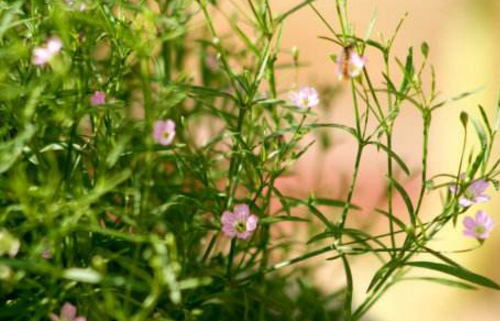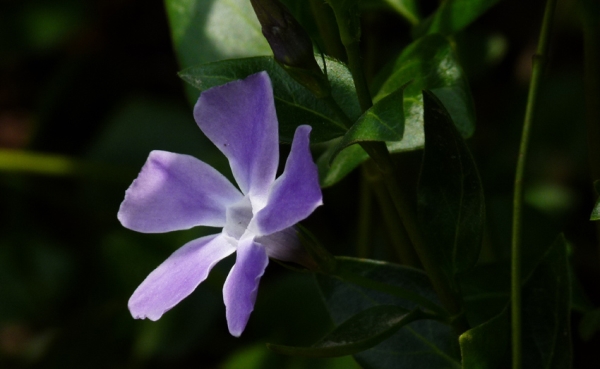The Propagation method of Arrow feather Taro
1. ramets
The survival rate of arrowroot propagation is higher than that of arrowroot propagation method. It is best to reproduce in the spring when everything recovers and the climate is warm. Choose a sunny day with a temperature of 18~22℃. Select a healthy stalk and cut off the root with the stem and leaf. After drying the cut in a cool, dry place, the new plant can be planted directly as a new plant.

2. Cutting
The method of cutting propagation of arrowroot is relatively simple. It only needs to select the most robust bud in the whole plant in April to May of each year and cut it down with a knife for 10~12 cm in length. Cut off the leaves, leaving only the leaves at the top of the plant, then cut off 1/3 of the size of the leaves, soak the buds in the rooting powder, insert them into the soil, pour appropriate amount of water, put them in a cool and ventilated environment, and wait for the plants to take root and sprout.
Through this article, I believe that everyone has mastered the cultivation and reproduction of arrowroot, as long as you follow the above steps, you will be able to cultivate both beautiful and healthy arrowroot.
Cultivation methods and precautions of arrowroot arrowroot Chinese scientific name arrowroot arrowroot arrowroot
Latin name Ctenanthe oppenheimiana
Also known as red feather arrowroot, double line arrowroot
kingdom planta
family arrowroot
It belongs to the genus Ctenophorus
arrowroot (red arrowroot, double line arrowroot), arrowroot family, ctenophora, plant height up to 150 cm, leaves oblique, arrow-shaped, hence the name arrowroot. Has extremely high ornamental value. Place of origin Brazil etc. 1. Morphological characteristics
Evergreen perennial herbaceous foliage plant. Plant height up to 100 cm above. The leaf blade is long elliptic to lanceolate, leaf margin has obvious ripple, yellow-green leaf surface on both sides of the main vein, there are regular oval and elliptic dark green patches alternate into pinnate arrangement. The leaves are 25 - 30 cm long and 8 - 15 cm wide. The back and petioles are purple-red, and the leaves extend upward. The leaves are inclined, arrow-shaped, and the stems are fine velutinous.
2. Growing environment
Originated in Brazil and Costa Rica. Love warm, moist and semi-shady ring zhang. Avoid scorching sun exposure. Suitable for loose, fertile, well-drained loam.
3. Cultivation techniques
Plant division and propagation. In spring, combine with pot turning and soil changing, remove root soil after removing pot, and plant 3~5 plants in each cluster.
Pot selection decayed leaf soil (or peat soil), garden soil by 1:1 ratio of mixed preparation of culture soil. During the growing season, pay attention to keeping the soil moist, but do not accumulate water. Summer, autumn high temperature dry weather, spray water twice a day to the leaves, in order to facilitate the normal growth of leaves and increase luster. Usually, the amount of fertilizer required is not large, too much fertilizer is easy to cause excessive growth of plants, green leaves and not bright, even lodging, reduce ornamental value, so fertilizer should be controlled, and thin fertilizer can be applied once a month in general growth season. Stop fertilizing in late autumn and control watering. October into the cold, winter room temperature to maintain above 10℃.
[Usage] Place it at the entrance of hall, on both sides of corridor or in the corner of conference room as decoration.
4. Disease and pest control
red spider
There are few diseases and insect pests of arrowroot, but if the ventilation is poor and the air is dry, red spider damage will also occur. Imidacloprid series drugs should be sprayed for control.
anthracnose
Colletotrichum gloeosporioides is yellow brown, yellow spots are formed near the edge of leaves or in the center of leaves at the initial stage of disease, and gradually expand, the color deepens and turns yellow brown. The causes of disease are high temperature and humidity, air circulation is not good, plants are placed too closely, weeds and rotten leaves are more in the cultivation environment, excessive nitrogen fertilizer is applied, and plants grow excessively. Young tissues are prone to disease.
Strengthen fertilizer and water management, increase phosphorus and potassium fertilizer appropriately, and reduce nitrogen fertilizer, promote plant growth and fullness, and enhance their own resistance. Remove diseased leaves and weeds in time to reduce infection sources. Plant placement is not easy to be too dense, proper ventilation and light transmission, reduce the humidity of the environment, can reduce the incidence. Spraying protection at onset. The medicament comprises: 50% carbendazim 600 times to 800 times; or 75% chlorothalonil 600 times to 800 times;50% mancozeb 500 times to 600 times, once every 7 to 10 days. Various drugs should be alternated to prevent resistance.
1. Keep the temperature.
When cultivating arrowroot, we must pay attention to the temperature control, preferably between 18~25℃, which can ensure the rapid growth of plants as much as possible. If the summer weather is too hot, move to a cool environment to shade, lest the temperature is too high to dry the plant. In winter, it is also necessary to move the plants to the balcony and expose them to more sun to keep them warm.
2, environmental moisture
The arrowroot likes a moist growing environment, basically keeping the humidity around the plant at about 80%. A moist environment is more conducive to the growth of arrowroot plants, so be sure to spray water mist on the environment around the plants to moisturize them. Especially in summer, in addition to watering, spray more water mist to avoid drying.
- Prev

Matters needing attention in wedding dress hanging orchid culture
1. Because it likes the light, it is better to grow in a humid environment, but not too much sun exposure, keep normal all-day sunshine, do not stay in a dark environment for a long time, otherwise it will not blossom and only grow leaves.
- Next

The reason why Catharanthus roseus does not bloom
Soil problems if the basin soil of Changchun vine uses alkaline and poorly ventilated clayey soil in the process of culture, it may lead to poor drainage, poor air permeability or even too poor soil, resulting in poor growth of Changchun vine and non-flowering. Too much watering should be reduced during the flowering of periwinkle.
Related
- Fuxing push coffee new agricultural production and marketing class: lack of small-scale processing plants
- Jujube rice field leisure farm deep ploughing Yilan for five years to create a space for organic food and play
- Nongyu Farm-A trial of organic papaya for brave women with advanced technology
- Four points for attention in the prevention and control of diseases and insect pests of edible fungi
- How to add nutrient solution to Edible Fungi
- Is there any good way to control edible fungus mites?
- Open Inoculation Technology of Edible Fungi
- Is there any clever way to use fertilizer for edible fungus in winter?
- What agents are used to kill the pathogens of edible fungi in the mushroom shed?
- Rapid drying of Edible Fungi

